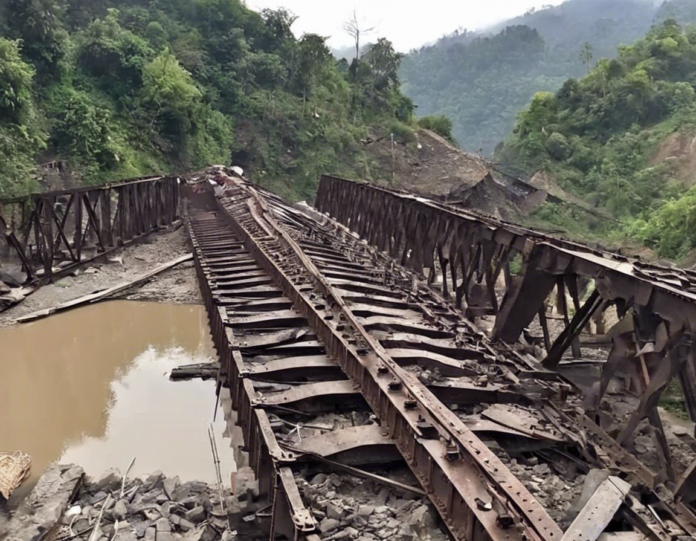The recent railway bridge collapse in Mizoram has shocked the nation, raising concerns about the safety and resilience of infrastructure in the region. The incident, which occurred on [date], has spurred debates on the need for stringent safety protocols and proactive maintenance practices to prevent such disasters in the future.
What Led to the Disaster?
The railway bridge collapse in Mizoram was a result of a culmination of various factors, including natural wear and tear, lack of maintenance, and extreme weather conditions. The bridge, which was constructed [number of] years ago, had not undergone significant renovations or repairs, leading to structural weaknesses over time. Additionally, the heavy rainfall in the region exacerbated the situation, causing the foundations of the bridge to weaken and eventually give way.
The Impact on Transportation
The collapse of the railway bridge has had severe repercussions on transportation in the region. As a vital link for both passenger and freight trains, the closure of the bridge has disrupted the movement of goods and people, leading to economic losses and inconvenience for commuters. The authorities have scrambled to find alternative routes and modes of transportation to mitigate the disruption caused by the incident.
Lessons Learned
The Mizoram railway bridge collapse serves as a stark reminder of the importance of regular inspections, timely maintenance, and investments in infrastructure resilience. It highlights the need for authorities to conduct thorough assessments of existing structures, identify potential risks, and take proactive measures to address them. Moreover, it underscores the significance of adapting infrastructure to withstand changing climate patterns and extreme weather events.
Preventive Measures
In the aftermath of the disaster, there is a pressing need for immediate actions to prevent similar incidents in the future. Some key preventive measures that can be implemented include:
- Regular Inspections: Conducting frequent inspections of bridges and infrastructure to identify potential weaknesses and address them in a timely manner.
- Investing in Maintenance: Allocating resources for regular maintenance and repairs to ensure the structural integrity of bridges and railways.
- Upgrading Resilience: Enhancing the resilience of infrastructure to withstand natural disasters and climate change impacts.
- Emergency Response Plans: Developing robust emergency response plans to handle situations like bridge collapses and minimize the disruptions caused.
The Way Forward
The Mizoram railway bridge collapse should serve as a wake-up call for policymakers, engineers, and stakeholders to prioritize safety and sustainability in infrastructure development. By learning from this tragic incident and implementing stringent safety measures, we can build a more resilient and reliable transportation network that serves the needs of the community while ensuring the safety of all individuals.
Frequently Asked Questions (FAQs)
-
What caused the Mizoram railway bridge collapse?
The collapse was primarily due to structural weaknesses, lack of maintenance, and heavy rainfall. -
How has the bridge collapse impacted transportation in Mizoram?
The closure of the bridge has disrupted the movement of goods and people, leading to economic losses and inconvenience for commuters. -
What lessons can be learned from the incident?
The importance of regular inspections, maintenance, and infrastructure resilience is highlighted by this disaster. -
What preventive measures can be taken to avoid similar incidents in the future?
Regular inspections, investing in maintenance, upgrading resilience, and developing emergency response plans are key preventive measures. -
What is the significance of the Mizoram railway bridge collapse in the broader context of infrastructure safety?
The incident underscores the critical need for proactive measures, investments in infrastructure resilience, and adherence to safety protocols in infrastructure development.








